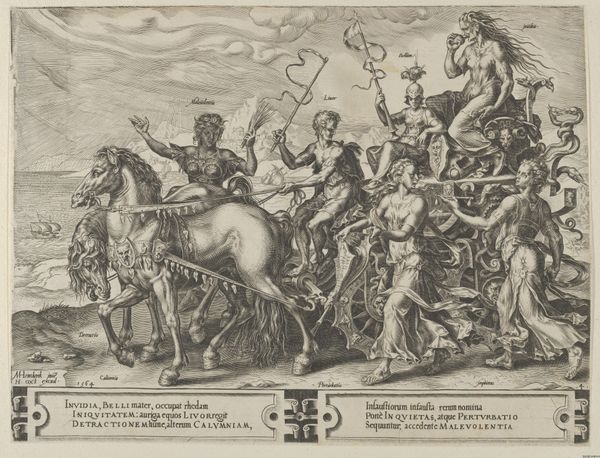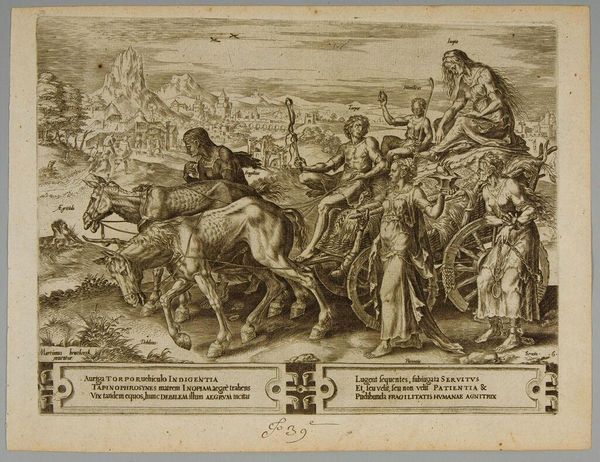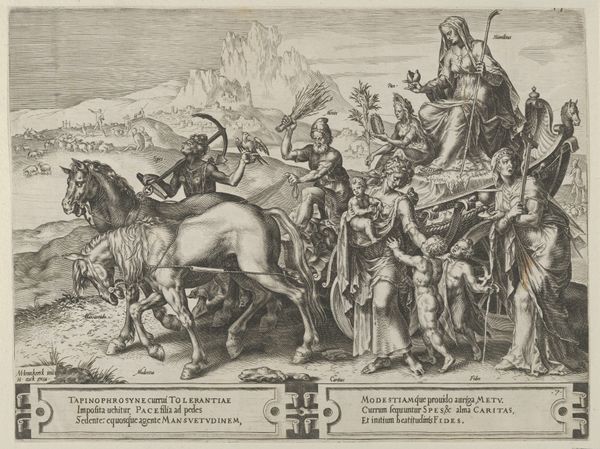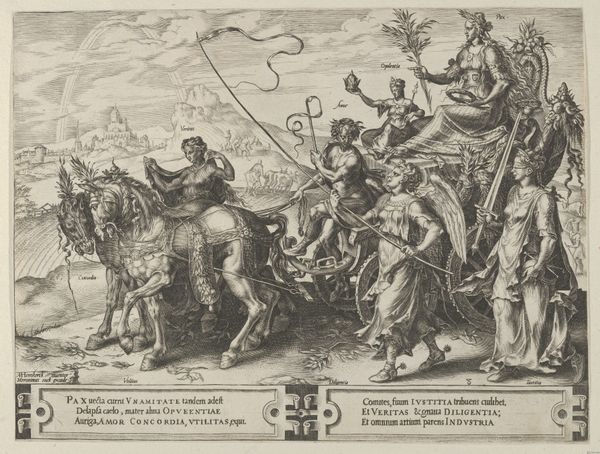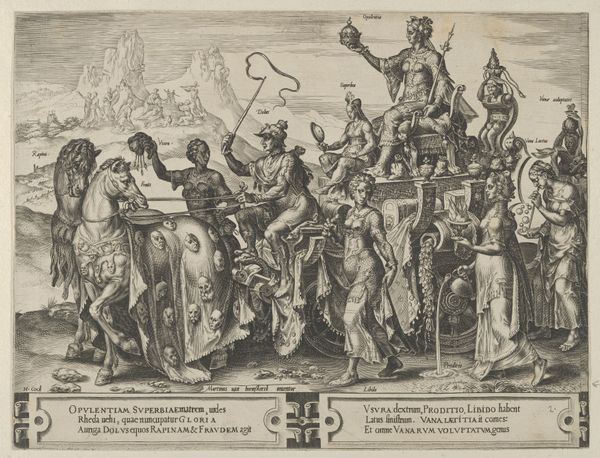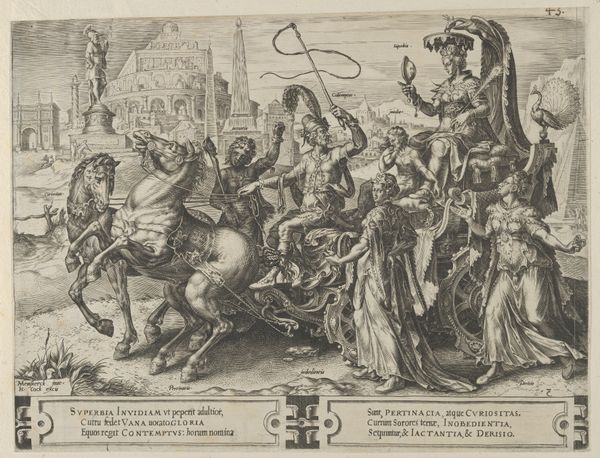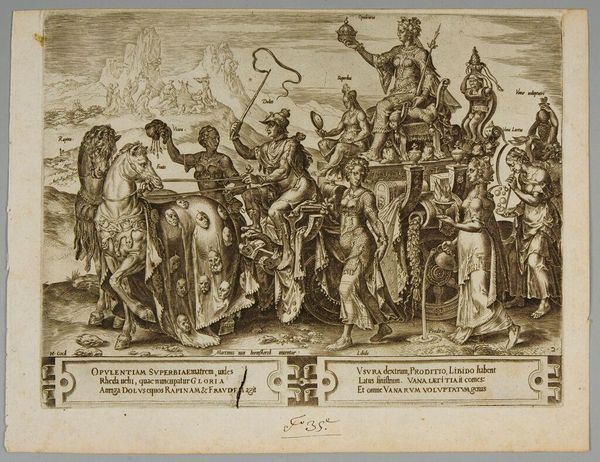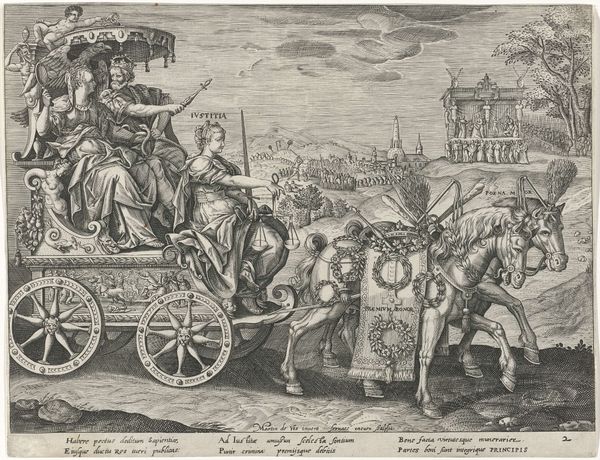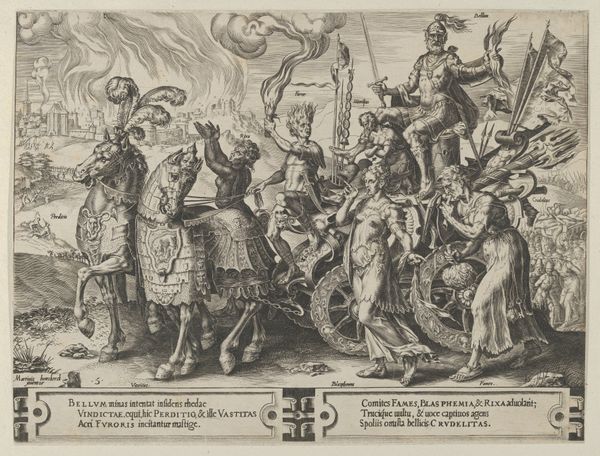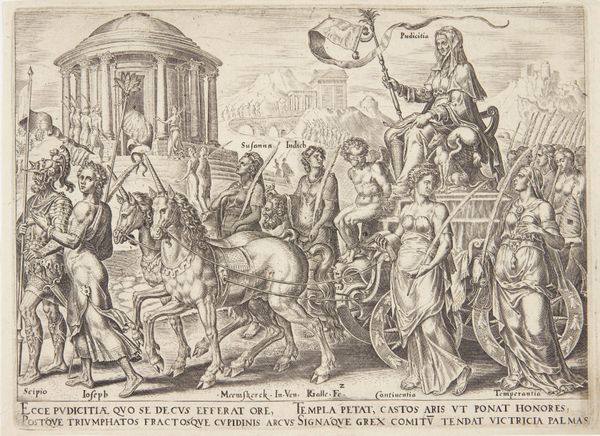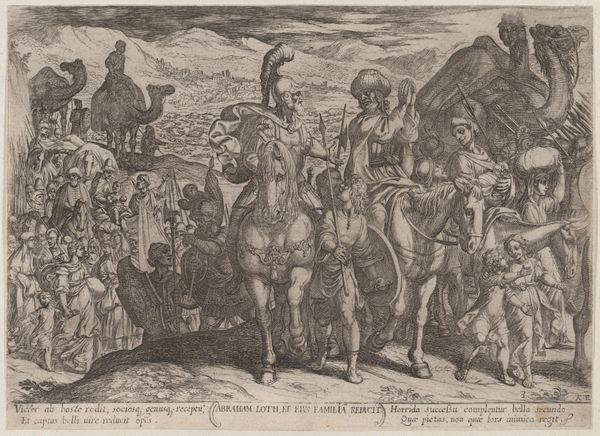
The Triumph of Want, from The Cycle of the Vicissitudes of Human Affairs, plate 6 1564
0:00
0:00
Dimensions: Sheet: 8 3/4 × 11 9/16 in. (22.2 × 29.3 cm)
Copyright: Public Domain
Curator: This is Cornelis Cort’s engraving, “The Triumph of Want, from The Cycle of the Vicissitudes of Human Affairs, plate 6,” dating from 1564. The rendering is impressive; what strikes you about this print? Editor: Well, it's incredibly detailed. I am initially drawn to the composition. The procession is very strange; its topic seems to be class-based. How would you read the work's narrative? Curator: We should begin with its production: look at the materiality of the print itself, at Cort's skilled handling of the engraving tools. He is working from someone else's idea – Marten van Heemskerck - translating it and disseminating it across Europe, using the reproductive power of printmaking to highlight societal imbalance. Think about the cost of materials: the paper, the ink, the tools. These images were circulated and purchased. Editor: That's an interesting lens. So, are you suggesting the very act of creating and distributing these prints comments on the 'want' depicted? Curator: Precisely. The images of poverty, subservience, and labour weren’t free to make. It begs the question of the patron's aim, as they seem to represent those downtrodden as some strange 'virtue'. Consider who the intended audience might have been, who bought such works? Their position shapes the perception of ‘want.’ Look closely – do the fine lines suggest it targets wealthier consumers? Editor: I see your point. It highlights the detachment of those in power from the realities of the laboring class and, furthermore, emphasizes the labour behind image production, creating a stark irony between the image and its function. So the medium, an intaglio engraving printed on expensive materials, adds to the narrative? Curator: Exactly. And it prompts questions: what responsibilities, then, do artists and consumers have to such inequalities? Editor: It shifts my perspective from just seeing an allegorical image to thinking about the economic structure that allowed its creation and dissemination. Thanks; that really clarifies how powerful a materialist approach can be.
Comments
No comments
Be the first to comment and join the conversation on the ultimate creative platform.
